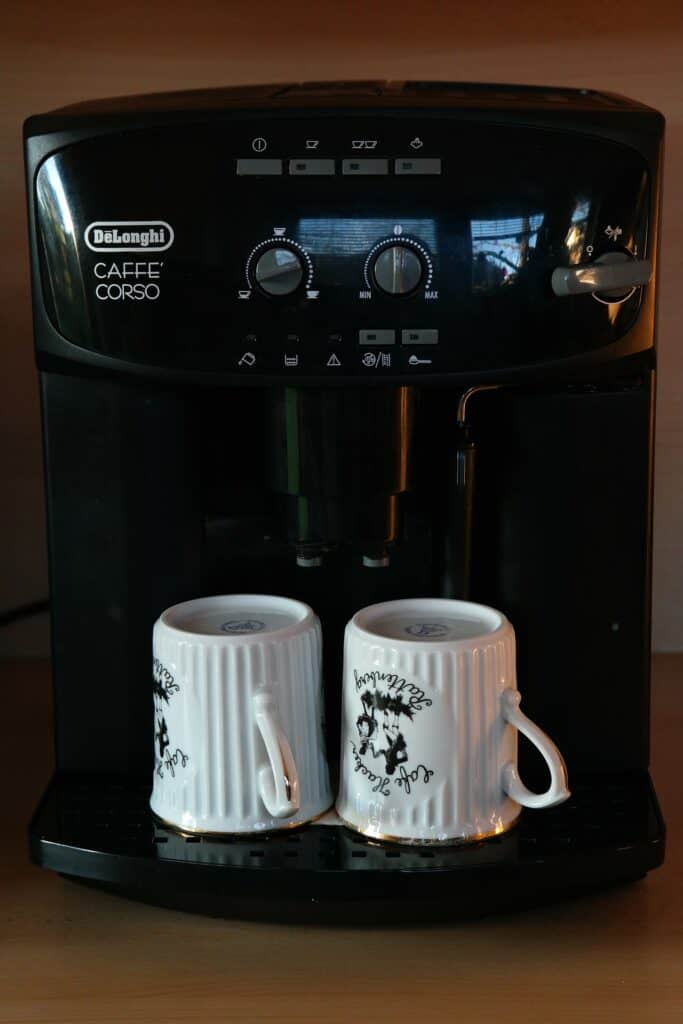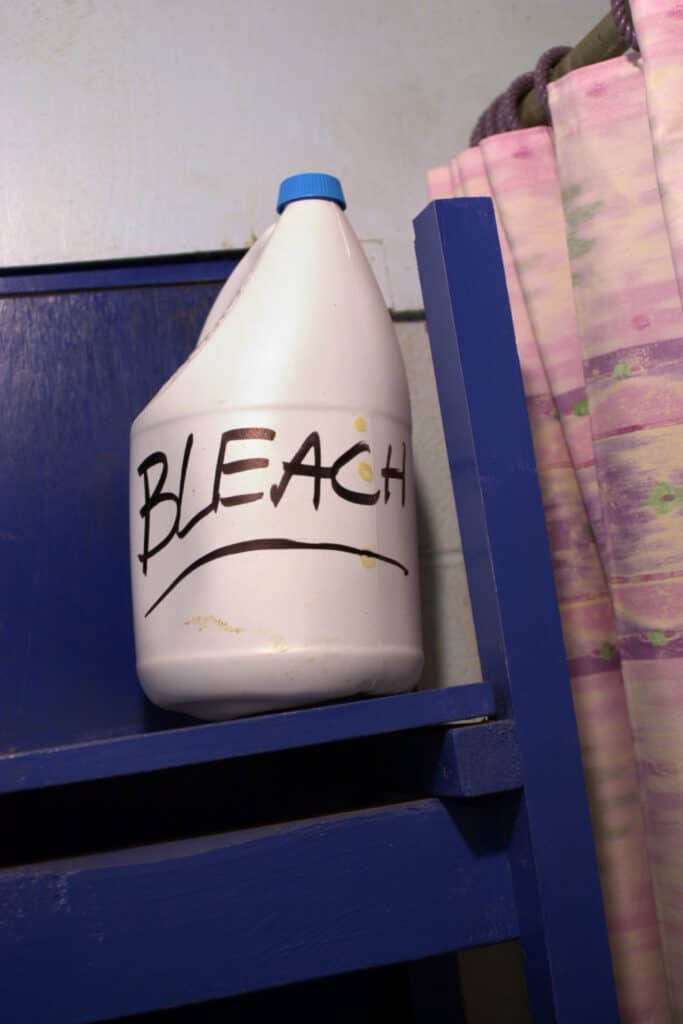As an Amazon Associate we earn from qualifying purchases.
There are few things bacteria and fungi love more than warm wet environments. What is a coffee maker after you are done using it? Well, you guessed it, it is a warm and wet environment.
So you can safely continue feeding your coffee habits, let’s get down to how to clean a coffee maker.
Quick Navigation
How to Clean a Coffee Maker With Bleach

Materials Needed
- 1 tablespoon bleach
- 1 gallon of water for mixing with bleach
- 5 gallons of water completely clean no contact with any bleach
- Drip coffee machine

Instructions
- Mix Bleach and Water: Never put bleach directly into the machine. Always mix it first with water. You will add a tiny amount of bleach (1 tablespoon) to water (1 gallon of water). This formula is very important to get right! You do not want to add more bleach than this. As you do this, ensure you are in a well-ventilated area. The fumes from bleach are caustic and can damage your eyes, lungs, and skin when it comes into contact.
- Run a Full Cycle: Pour your bleach into the water reservoir and let it fully run through the coffee machine. Let the mixture fill the coffee pot as well to clean the pot fully.
- Pour Out the Liquid From the Coffee Pot: After the coffee pot fills, immediately turn it off and pour out the mixture. You want to turn it off to minimize the bleach mixture that hits the heating plate.
- Repeat Until All the Bleach Water Is Used Up: You must run 1 gallon of water through the system. This will take several runs depending on your drip model. Be sure to run through all of it, and don’t leave the machine unattended – if someone else went to use it and did not know you were running bleach through it, they could get very sick!
- Clean With Hot Water: Get a clean gallon of hot or warm water and run this through your coffee machine. This will take a while, so you want to use hot water to minimize the time spent warming water in the brew cycle. The less time you wait to boil water, the better here. Repeat this until you’ve run 5 fresh gallons of hot water through your coffee system. Yes, you need to run 5 gallons of water through the system to ensure it is clean of bleach residue!
- Smell the Final Batch of Water: Smell the final batch of water; it should have no scent. Bleach has a distinctive smell, so if there is no smell, you are probably all good. If you want to be more precise, you can test the PH level, and if it is 7, you are good to go.
- Air Dry: Air dry upside down for 1 day in the sun or several days on the countertop. Air dry is a critical step! As it dries in the open air, any final deposits of bleach will turn to solid white specs. If you see these, you must continue running fresh water through your machine.
Related Questions
Is It Safe to Use Undiluted Bleach to Clean a Coffee Maker?
It is absolutely unsafe to use undiluted bleach to clean coffee makers. Not only is that unsafe, using diluted bleach is frankly unsafe.
You should not use bleach to clean coffee makers unless you have undergone specific training, have the right tools and safety precautions, and have a good grasp of the chemistry at work.
How Often Do Coffee Makers Need Descaling?
How often a coffee machine needs descaling is fully dependent on the water situation in your house. If you have really soft water it may never need it. For many, once every few months is probably a good amount.
Conclusion
While the drip coffee maker truly is a modern invention of convenience and necessity for many. It is critical to take care of your investment and your health.
Don’t use harsh chemicals to clean cookware. There are safer, easier alternatives like vinegar that do just as good a job but with the only danger being a slightly sour cup of joe.
